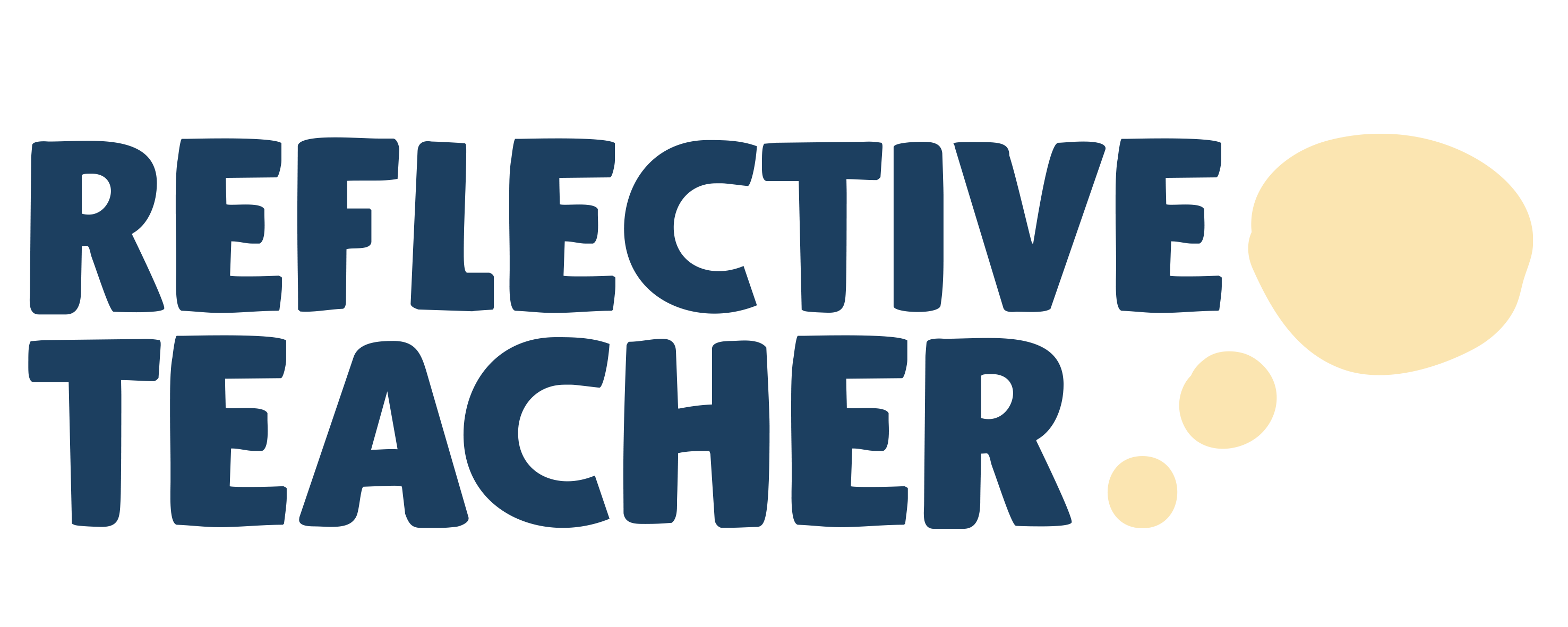As teachers, we’re always striving to improve and bring our A-game to the classroom. But let’s be real—teaching is tough, and the day-to-day hustle can make it hard to hit pause and think about how we’re teaching, not just what we’re teaching. This is where reflective practice comes in. It’s like a secret superpower that can transform your teaching, keep you motivated, and make a real difference to your students’ learning.
Reflective practice isn’t just about ticking boxes or doing an end-of-year review. It’s about regularly hitting the mental ‘pause button’, considering what went well, what could be better, and how you can tweak your approach next time. And the best part? It’s something you can easily weave into your daily teaching routine, no matter how busy you are.
Why Reflective Practice is a Game-Changer 💪
Reflective practice isn’t just a buzzword in teacher training sessions. When done right, it’s a powerful tool that helps you:
- Fine-tune your teaching strategies: By reflecting on what works and what doesn’t, you can adapt your techniques and make real-time improvements.
- Boost student outcomes: When you adjust your practice based on reflection, your students benefit directly. Better teaching equals better learning!
- Increase self-awareness: Reflective practice helps you understand your teaching style, strengths, and areas for growth, leading to more confidence in the classroom.
- Combat burnout: Teaching is a marathon, not a sprint. Regular reflection helps you stay connected to your purpose and reignites your passion for the profession.
How to Embed Reflective Practice in Your Daily Routine 🛠️
The big question is: how can you actually build reflective practice into your already packed schedule? Here are some tried-and-tested strategies that work for both new and experienced teachers:
1. The “Five-Minute Reflection” Routine ⏰
Time is precious, so start small. Dedicate just five minutes at the end of each day to jot down quick thoughts about what went well and what you could tweak. You don’t need to write an essay—bullet points work just fine! Ask yourself questions like:
- What lesson went particularly well today? Why?
- Which student struggled, and how can I support them better tomorrow?
- What’s one thing I’d do differently next time?
This quick reflection can be done while tidying your classroom, during your commute, or even while enjoying a well-deserved cup of tea.
2. Use a Reflective Journal 📓
Taking things up a notch, keeping a reflective journal is a fantastic way to deepen your practice. Whether you prefer a traditional notebook or a digital app like Evernote, the key is consistency. Write regularly about your experiences, lessons learned, and any challenges you’re facing. This isn’t just a brain dump—over time, you’ll start to spot patterns and gain valuable insights into your teaching practice.
You might want to structure your journal using a framework like Gibbs’ Reflective Cycle or Kolb’s Learning Cycle to give your thoughts more direction. But don’t get too hung up on formalities—the most important thing is to reflect in a way that feels natural to you.
3. Collaborative Reflection with Colleagues 🤝
Teaching can sometimes feel like a solo mission, but it doesn’t have to be. Teaming up with colleagues for reflective discussions is a brilliant way to share insights and learn from each other. Whether it’s a quick chat in the staffroom or a more structured peer observation session, having someone else’s perspective can spark new ideas and help you see things you might have missed.
Consider setting up a reflective practice group where you regularly meet to discuss what’s working in your classrooms, challenges you’re facing, and any new strategies you’re testing out. Not only is this a great professional development opportunity, but it also builds a stronger sense of community among staff.
4. Build Reflection into Lesson Planning and Feedback 📅
Embedding reflection directly into your lesson planning process is a game-changer. Before teaching a lesson, reflect on what you want to achieve and anticipate any potential challenges. After the lesson, take a few minutes to evaluate:
- Did the lesson achieve its objectives?
- How engaged were the students?
- What could be adjusted for next time?
You can also integrate reflection into how you give feedback. For example, after marking a set of student work, reflect on common areas where students struggled. This could inform your future lessons or even prompt a reteach of certain concepts.
5. Use Reflective Prompts and Questions 🎯
Sometimes, getting started with reflection can be the hardest part. Having a list of go-to reflective questions can be super helpful. Here are a few examples:
- What did I notice about the students’ engagement today?
- How did I respond to unexpected challenges?
- What’s one thing I did today that I’m proud of?
- What’s one small change I can make to improve my teaching tomorrow?
Having these prompts on hand makes it easier to quickly dive into reflection, even on those days when you’re running on fumes.
How Reflective Practice Evolves Over Time 🌱
If you’re just starting out with reflective practice, it might feel a bit awkward or forced at first. But like anything in teaching, the more you practice, the more natural it becomes. Over time, reflection stops being an ‘extra task’ and becomes an integral part of how you approach your teaching. And the best part? You’ll see the impact—not just in your professional growth but in your students’ success too.
Reflective practice is like a muscle—the more you use it, the stronger it gets. And as you grow as a teacher, your reflections will become more nuanced, helping you tackle even the trickiest challenges with confidence.
Ready to Level Up? Give Reflective Teaching a Go! 🚀
So, are you ready to make reflective practice part of your teaching toolkit? Start small, stay consistent, and keep it simple. Whether you’re grabbing a few minutes at the end of the day to reflect or diving deep into journaling, the benefits are undeniable.
Try it out this week! Grab a notebook, pick a reflective prompt, and see what insights you uncover. You might be surprised by how much your teaching evolves—and how much more connected you feel to your students and your craft.
Happy reflecting! 💭✨
Start your year by joining the ReflectiveTeacher community. Visit ReflectiveTeacher’s Official Website for more information and to download the app. Follow us on Twitter, Instagram, and LinkedIn for the latest updates and insights from educators around the globe. We offer a 30 day free trial to any school of any size to give ReflectiveTeacher a test drive.



Comments are closed